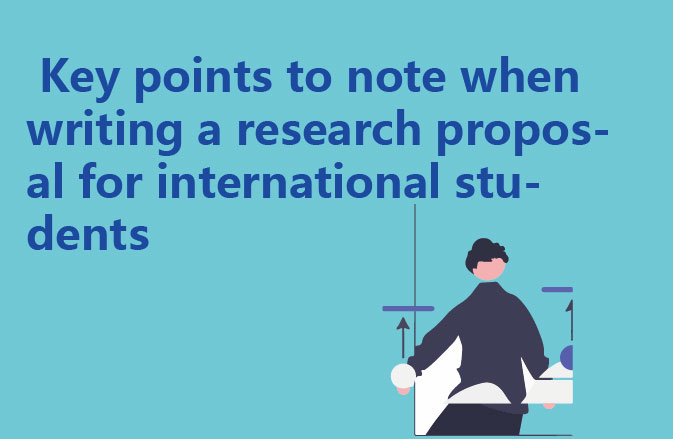Determining a clear research direction and topic selection is critical to the successful completion of the subsequent thesis.
Specifically, the research proposal should contain the following key points:
In the abstract section, a brief description of about 300 words is required, including the formulation of the research problem, the basic theoretical cornerstones, the hypothetical conditions (if any), the research methodology and the main results, etc., and the specific details of the research methodology, such as the design scheme, the execution process, the sample screening, and the instrumentation used, etc., should also be elaborated.
The introduction section should first introduce the basics of the research field, covering the topic of the study, the reasons for initiation, existing academic problems and their solutions, followed by a clear definition of the research objectives and their further path of execution, with corresponding information on the selected research methodology.
The methodology section is of the utmost importance and must describe in detail the adopted research methodology, supported by sufficient literature evidence, revealing possible research limitations and especially potential challenges during implementation.
In practice, the methodology section usually covers the following aspects:
1. exploring the core ideas of the study and its guiding tenets.
2. demonstrating the way in which the research was conducted.
3. explaining the strategic design established to achieve the research objectives.
4. detail the data collection and analysis techniques.
5. emphasise the ethical principles to be followed in the research process. 6. ensure the reliability and validity of the results.
6. ensure the reliability and applicability of the results of the study.
7. identify the limitations of the current study.
Research methods include.
1- Qualitative, mainly refers to the analysis of data obtained in a specific range, such as age data, gender, and gender.
Qualitative, mainly refers to the analysis of data obtained from a specific range, such as age data, gender, education level, etc., which can be obtained through questionnaires, or other books and journals.
2-Quantitative, mainly refers to the average, positive and negative proportionality, volatility, probability, etc., you can also get the data through questionnaires, books online and so on.
3-When you write this part of the specific, but also to write specifically; what is the research method, write the definition of quantitative and qualitative method, what is the scope of use, why the research to use this method, what are the advantages and disadvantages of using this method of research, what data can be obtained, and can be used to analyse what problems.
4、Literature Review
Mainly a large number of literature, literature related to your thesis, literature refers to the previous research has been written content, used as an argument for your point of view, and help to confirm your research hypothesis is correct or wrong. This is not only to test your reading ability, but also language organisation ability, literature review is mainly to show your theories related to the research problem, and your understanding of the research problem, the literature is usually from books, news, journals, thesis, websites and so on.
5、Results and Discussion
A research proposal is generally inconclusive because no research study has been started yet, but you can write about what methods you intend to use to collect data, and what statistical procedures you will use to answer your research questions or test your hypotheses.
It is important to write about the implications of your research, presenting the strengths and weaknesses of your research question, and the limitations of the research process, including time or financial constraints.
6、Conclusion and Recommendations
Write a conclusion and give some recommendations that have been shown in the article.
7. References
List of Literature, in alphabetical order
Appendix
There are interviews, questionnaires or certificates and so on can be used as an attachment Note that the Research Proposal for studying abroad is not the same as the normal RP, which is usually shorter, more than 2-5,000 words, less than a few hundred words.
The key to RP for study abroad usually lies in two points, one is the selection of the topic, and the other is the research methodology.
Choosing a topic is to determine your research question, or hypothesis to be verified.
The definition and designation of research methodology is quite confusing among schools, with research methodology/method/design being the main one, and specific cases need to be analysed in detail. However, in most cases, it is required to explain the basic research strategy, or a specific technical way to achieve, or both.




